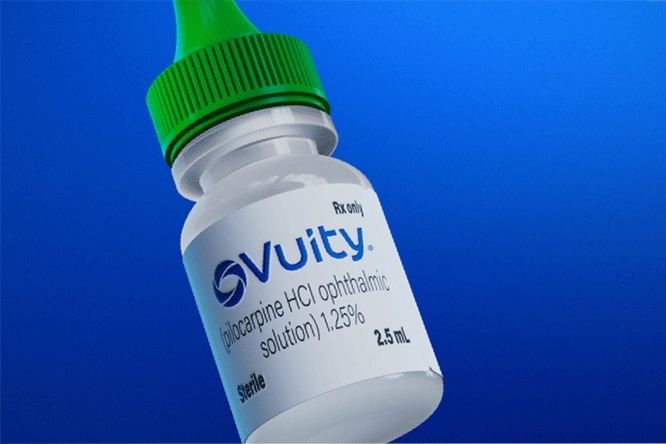
Pre-anesthetic medications are drugs administered before anesthesia to achieve several beneficial effects, including reducing anxiety, providing analgesia, minimizing adverse effects, and facilitating a smoother induction and maintenance of anesthesia.
Purposes of Pre-anesthetic Medications
Pre-anesthetic medications serve several crucial purposes in the perioperative period:
- Reduction of Anxiety and Apprehension:
- Anxiety is a common response to surgery and anesthesia. Pre-anesthetic medications, particularly anxiolytics, help to calm the patient, reducing psychological stress and promoting relaxation.
- Provision of Analgesia:
- Pre-emptive analgesia involves administering pain-relieving medications before the surgical procedure begins. This approach can reduce the overall need for post-operative analgesics and minimize the risk of chronic pain development.
- Reduction of Gastric Acidity and Volume:
- Aspiration of gastric contents during anesthesia can lead to severe complications such as aspiration pneumonitis. Medications that reduce gastric acidity and volume help to mitigate this risk.
- Prevention of Allergic Reactions:
- For patients with a history of allergic reactions, pre-treatment with antihistamines and corticosteroids can help prevent or minimize the severity of allergic reactions to anesthetic drugs.
- Decreasing Salivary and Respiratory Secretions:
- Anticholinergic medications reduce salivary and respiratory secretions, which can help prevent laryngospasm and improve visualization during intubation.
- Facilitation of Anesthesia Induction:
- Pre-anesthetic medications can make the induction of anesthesia smoother and faster, reducing the required doses of induction agents and minimizing associated side effects.
- Minimization of Side Effects:
- Certain pre-anesthetic medications can counteract the side effects of anesthetic drugs, such as nausea, vomiting, and bradycardia.
Categories of Pre-anesthetic Medications
Pre-anesthetic medications can be broadly classified into the following categories:
- Anxiolytics and Sedatives:
- Benzodiazepines: These drugs are commonly used for their anxiolytic, sedative, and amnesic properties.
- Barbiturates: Although less commonly used now, barbiturates can provide sedation and reduce anxiety.
- Alpha-2 Adrenergic Agonists: These drugs provide sedation, analgesia, and reduce sympathetic tone.
- Analgesics:
- Opioids: These are potent pain relievers that can be used to provide pre-emptive analgesia.
- Non-steroidal Anti-inflammatory Drugs (NSAIDs): These drugs reduce inflammation and provide mild to moderate pain relief.
- Anticholinergics:
- These drugs reduce salivary and respiratory secretions and can prevent bradycardia.
- Antiemetics:
- These drugs prevent nausea and vomiting, which can be side effects of anesthesia and surgery.
- Histamine Receptor Antagonists (Antihistamines):
- These drugs are used to prevent or treat allergic reactions and can also have sedative effects.
- Gastric Acid Reducers:
- H2-Receptor Antagonists: These drugs reduce gastric acid secretion.
- Proton Pump Inhibitors (PPIs): These drugs more effectively reduce gastric acid production.
Specific Drugs Used as Pre-anesthetic Medications
- Benzodiazepines:
- Midazolam:
- Mechanism of Action: Binds to GABA-A receptors, enhancing the inhibitory effects of GABA, leading to sedation, anxiolysis, and amnesia.
- Uses: Commonly used for pre-operative anxiety reduction and sedation.
- Advantages: Rapid onset, short duration of action, water-soluble (less painful on injection).
- Disadvantages: Can cause respiratory depression, especially when combined with opioids.
- Diazepam:
- Mechanism of Action: Similar to midazolam, enhances GABAergic neurotransmission.
- Uses: Used for anxiety reduction and muscle relaxation.
- Advantages: Longer duration of action compared to midazolam.
- Disadvantages: Slower onset, can cause significant sedation, potential for dependence.
- Lorazepam:
- Mechanism of Action: Similar to midazolam and diazepam.
- Uses: Effective for reducing anxiety and providing amnesia.
- Advantages: Intermediate duration of action, less likely to cause respiratory depression compared to diazepam.
- Disadvantages: Slower onset compared to midazolam.
- Midazolam:
- Opioids:
- Morphine:
- Mechanism of Action: Binds to opioid receptors in the central nervous system, reducing pain perception.
- Uses: Provides potent analgesia pre-operatively.
- Advantages: Effective for severe pain.
- Disadvantages: Can cause respiratory depression, nausea, vomiting, and hypotension.
- Fentanyl:
- Mechanism of Action: A synthetic opioid that is more potent than morphine.
- Uses: Provides rapid and potent analgesia.
- Advantages: Rapid onset and short duration of action.
- Disadvantages: Can cause respiratory depression, muscle rigidity, and bradycardia.
- Hydromorphone:
- Mechanism of Action: Similar to morphine, but more potent.
- Uses: Provides effective analgesia with a lower risk of nausea compared to morphine.
- Advantages: Shorter duration of action compared to morphine.
- Disadvantages: Can cause respiratory depression and hypotension.
- Morphine:
- Alpha-2 Adrenergic Agonists:
- Clonidine:
- Mechanism of Action: Stimulates alpha-2 adrenergic receptors, reducing sympathetic outflow and providing sedation and analgesia.
- Uses: Reduces anxiety, provides analgesia, and decreases blood pressure.
- Advantages: Can reduce the need for opioids and other anesthetics.
- Disadvantages: Can cause hypotension and bradycardia.
- Dexmedetomidine:
- Mechanism of Action: Highly selective alpha-2 adrenergic agonist.
- Uses: Provides sedation, analgesia, and reduces anxiety without causing significant respiratory depression.
- Advantages: Can be used in awake sedation and provides a more natural sleep-like state.
- Disadvantages: Can cause hypotension and bradycardia, more expensive than clonidine.
- Clonidine:
- Anticholinergics:
- Atropine:
- Mechanism of Action: Blocks acetylcholine at muscarinic receptors, reducing salivary and respiratory secretions and increasing heart rate.
- Uses: Reduces secretions and prevents bradycardia.
- Advantages: Effective in preventing bradycardia.
- Disadvantages: Can cause dry mouth, blurred vision, and urinary retention.
- Glycopyrrolate:
- Mechanism of Action: Similar to atropine, but with fewer central nervous system effects.
- Uses: Reduces secretions with less risk of tachycardia compared to atropine.
- Advantages: Fewer central nervous system side effects.
- Disadvantages: Can still cause dry mouth and blurred vision.
- Scopolamine:
- Mechanism of Action: Similar to atropine and glycopyrrolate, but with more pronounced sedative and antiemetic effects.
- Uses: Reduces secretions and prevents nausea and vomiting.
- Advantages: Effective antiemetic properties.
- Disadvantages: Can cause significant sedation, dry mouth, and blurred vision.
- Atropine:
- Antiemetics:
- Ondansetron:
- Mechanism of Action: Blocks serotonin (5-HT3) receptors in the chemoreceptor trigger zone and gastrointestinal tract.
- Uses: Prevents post-operative nausea and vomiting (PONV).
- Advantages: Effective and well-tolerated.
- Disadvantages: Can cause headache and constipation, may prolong the QT interval.
- Metoclopramide:
- Mechanism of Action: Blocks dopamine receptors in the chemoreceptor trigger zone and increases gastrointestinal motility.
- Uses: Prevents PONV and promotes gastric emptying.
- Advantages: Can be used to treat gastroparesis.
- Disadvantages: Can cause extrapyramidal symptoms, such as dystonia.
- Dexamethasone:
- Mechanism of Action: A corticosteroid with anti-inflammatory and antiemetic properties.
- Uses: Prevents PONV and reduces inflammation.
- Advantages: Long-lasting antiemetic effect.
- Disadvantages: Can cause hyperglycemia and immunosuppression.
- Ondansetron:
- Histamine Receptor Antagonists (Antihistamines):
- Diphenhydramine:
- Mechanism of Action: Blocks histamine (H1) receptors.
- Uses: Prevents allergic reactions and reduces itching.
- Advantages: Also has sedative effects.
- Disadvantages: Can cause dry mouth, blurred vision, and sedation.
- Ranitidine:
- Mechanism of Action: Blocks histamine (H2) receptors in the stomach.
- Uses: Reduces gastric acid production and the risk of aspiration pneumonitis.
- Advantages: Effective in reducing gastric acidity.
- Disadvantages: Less potent than PPIs.
- Diphenhydramine:
- Gastric Acid Reducers:
- Ranitidine:
- Mechanism of Action: H2-receptor antagonist which inhibits gastric acid secretion.
- Uses: Reduces gastric acid volume before surgery, preventing aspiration.
- Advantages: Well-established safety profile.
- Disadvantages: Less effective than PPIs.
- Omeprazole:
- Mechanism of Action: Proton pump inhibitor that blocks the final step in gastric acid production.
- Uses: More effective at reducing gastric acid secretion than H2-receptor antagonists.
- Advantages: Long-lasting effect.
- Disadvantages: Delayed onset, potential for drug interactions.
- Ranitidine:
Conclusion
Pre-anesthetic medications play a vital role in optimizing patient outcomes during anesthesia and surgery. By reducing anxiety, providing analgesia, minimizing adverse effects, and facilitating smoother anesthesia, these drugs contribute to a safer and more comfortable perioperative experience. The choice of specific pre-anesthetic medications depends on the patient’s medical history, the type of surgery, and the anesthesiologist’s preferences. A thorough understanding of these medications and their effects is essential for all healthcare professionals involved in the care of surgical patients.
References:
- Stoelting, R. K., & Miller, R. D. (2018). Basics of Anesthesia (7th ed.). Philadelphia, PA: Elsevier.
- Egan, T. D. (2012). Pharmacology and Physiology for Anesthesia. New York, NY: McGraw-Hill Medical.
- Morgan, G. E., Mikhail, M. S., & Murray, M. J. (2018). Clinical Anesthesiology (6th ed.). New York, NY: McGraw-Hill Education.
- Longnecker, D. E., Brown, D. L., & Newman, M. F. (2018). Anesthesiology. New York, NY: McGraw-Hill Education.
- Katzung, B. G. (2021). Basic & Clinical Pharmacology (15th ed.). New York, NY: McGraw-Hill Education.







